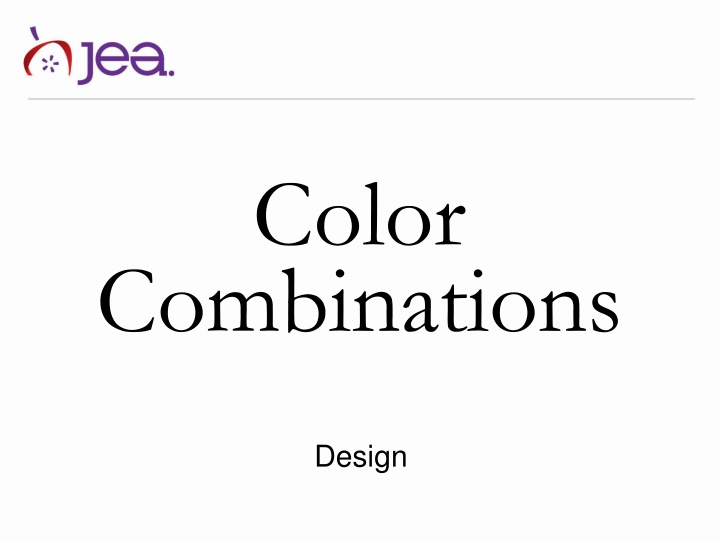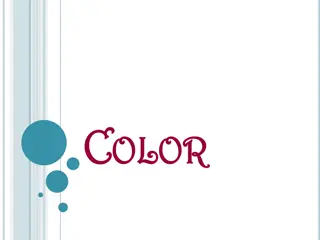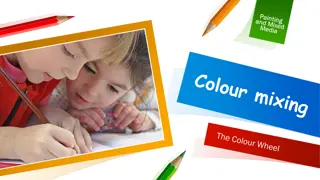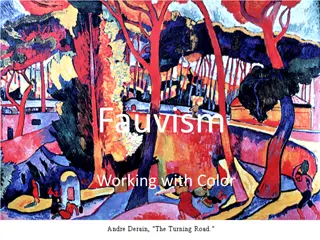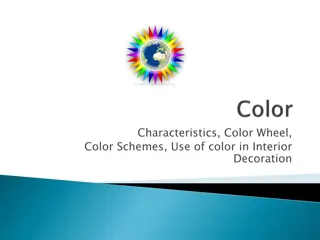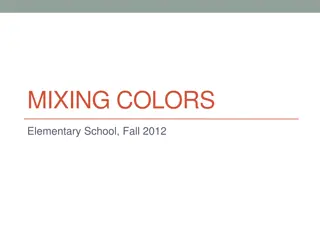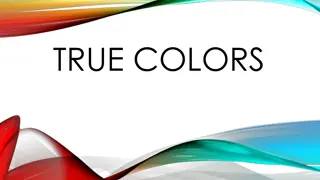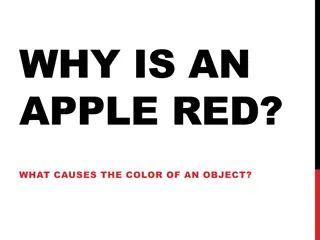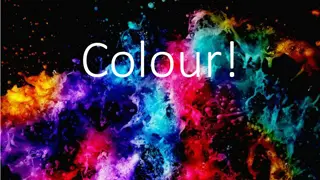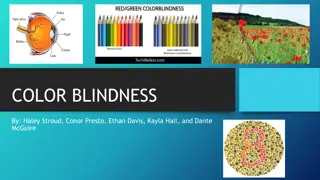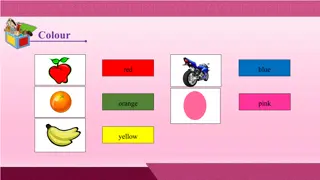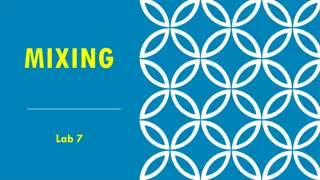Primary Colors and Color Mixing
Primary colors are essential in creating all other colors through mixing. Learn about RGB and CMYK color profiles, how they differ, and how they are used in design. Explore analogous and complementary colors on the color wheel and their RGB values.
Download Presentation

Please find below an Image/Link to download the presentation.
The content on the website is provided AS IS for your information and personal use only. It may not be sold, licensed, or shared on other websites without obtaining consent from the author.If you encounter any issues during the download, it is possible that the publisher has removed the file from their server.
You are allowed to download the files provided on this website for personal or commercial use, subject to the condition that they are used lawfully. All files are the property of their respective owners.
The content on the website is provided AS IS for your information and personal use only. It may not be sold, licensed, or shared on other websites without obtaining consent from the author.
E N D
Presentation Transcript
Color Combinations Design
When we took science in elementary school, we learned the base colors were red, blue and yellow. All other colors were made by mixing these primary colors: orange, violet, green, etc. Primary colors The colors that make up the base for every other color created. Depending on whether you are looking at it from science, printed material or through a monitor (TV or any screen), the base colors will differ. In journalism, art and graphic design, these primary color values change based on the color profile used: (R)ed, (G)reen, and (B)lue make up RGB, and (C)yan, (M)agents, and (Y)ellow make up CMYK. RGB is used for any medium using a monitor where light projects the color. CMYK is used in printing. In CMYK profiles, most often used in printing, the primary colors are cyan, magenta and yellow. Key (black) is also used to darken the colors that result when mixing the primary colors. In RGB profiles, used primarily when a monitor is projecting the color, red, green and blue are the primary colors.
However, those science lessons don t apply the same to design. In a CMYK color profile, cyan, magenta, yellow and key are used to create all other colors. CMYK Color Values: Cyan: C=100, M=0, Y=0, K=0 Magenta: C=0, M=100, Y=0, K=0 Yellow: C=0, M=0, Y=100, K=0 Key: C=0, M=0, Y=0, K=100 CMYK CMYK is a subtractive color profile where cyan, magenta, yellow and key (black) are combined and subtracted from black to create every other color.
In RGB, red, green and blue are combined to create every other color. RGB Color Values: R: R=255, G=0, B=0 G: R=0, G=255, B=0 B: R=0, G=0, B=255 RGB RBG is an additive color profile where red, green or blue are added together to create every other color. For example red and green would be combined to make yellow.
The color orange-red (middle) is analogous to the color orange (top) and red (bottom) in the color wheel. The RGB values for each color are as follows: Analogous Colors These are colors that fall next to each other on the color wheel. In CMYK, red-violet, red and red- orange would fall next to each other on the color wheel. Orange: R- 255 G- 165 B- 0 Orange-Red: R- 255 G- 69 B- 0 Red: R- 255 G- 0 B- 0
The colors yellow and the dark violet are complementary on the color wheel. The RGB values for each color are as follows: Complementary Colors These are contrasting colors that fall directly opposite each other on the color wheel. (violet/yellow, red/green). Yellow: R- 255 G- 255 B- 0 Dark Violet: R- 113 G- 9 B- 170
The colors red, yellow and blue are triadic on the color wheel. They fall equal distances away from each other. The RGB values for each color are as follows: Triad Colors This refers to three colors that fall equal distances from each other on the color wheel. Red: R- 255 G- 0 B- 0 Yellow: R- 255 G- 255 B- 0 Blue: R- 0 G- 0 B- 255
Mixing red and green produces yellow in the RGB color profile. Secondary Colors Mixing red and blue produces magenta in the RGB color profile. Secondary colors occur by mixing two primary colors together, and are dependent on the color profile. In CMYK, cyan, magenta and yellow act as the primary colors. In RGB, red, green and blue act as the primary colors. Mixing green and blue produces cyan in the RGB color profile.
Mixing red (primary) and yellow (secondary) produces orange (tertiary). Mixing blue (primary) and magenta (secondary) produces violet (tertiary). Tertiary Colors These colors come from mixing a primary color with a secondary color, or two secondary colors together. Mixing green (primary) and cyan (secondary) produces turquoise (tertiary).
